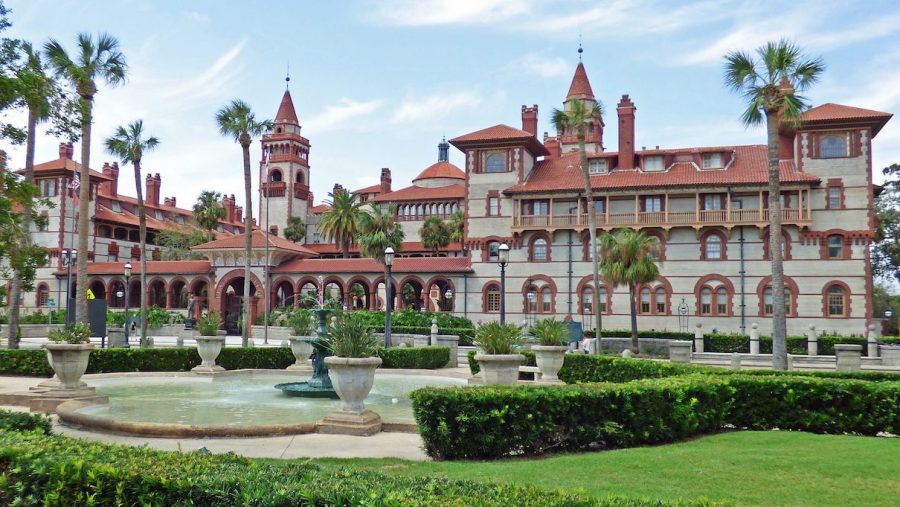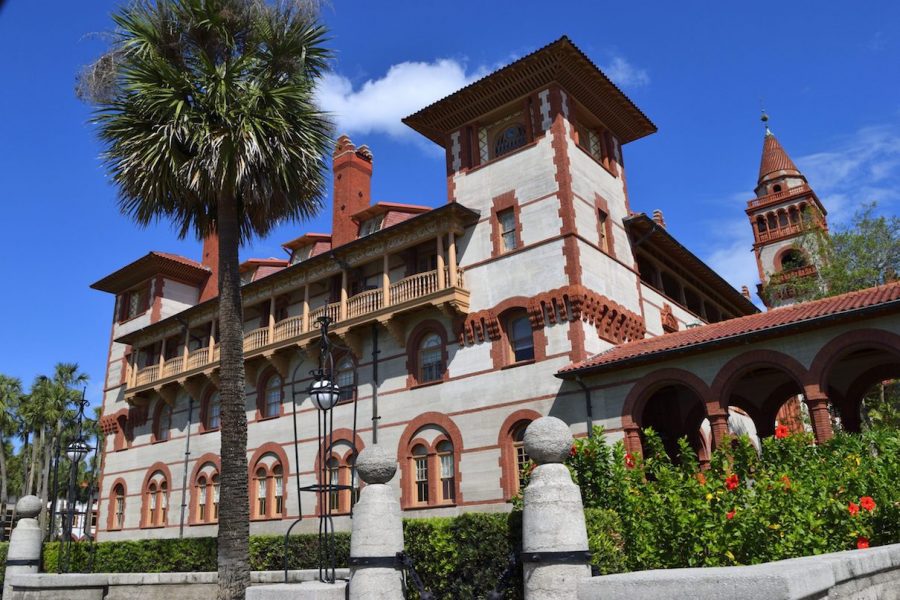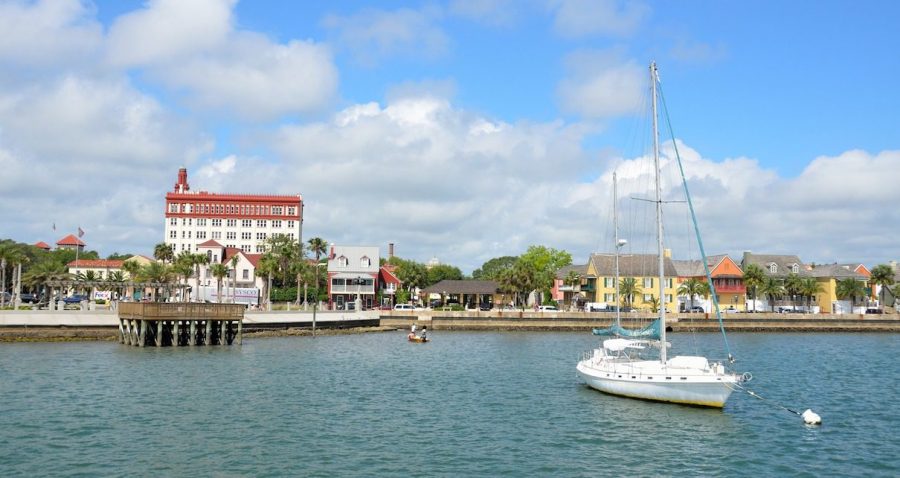
A visit to St. Augustine, Florida

The late 1800s must have been an amazing time to be alive. Post Industrial-revolution, the United States was filled with dreams of creating a new modern world. New building techniques, the invention of electricity, increase of transportation options, there was so much happening all at once. If you had money – and this was still a time of extreme division in the have and have-nots – the sky seemed the limit. Building projects abounded and one millionaire developer was ready to take advantage of it all.
Henry M. Flagler was that man. He had vacationed in St. Augustine and dreamed of creating a “New American Riviera” – a destination for all those winter-weary well-to-do businessmen from the North. He wanted to create a chic and glamorous vacation getaway in this warm and beautiful northern Florida coastline town.
He used his money to create a glorious new hotel resort in St. Augustine he named the Hotel Ponce de Leon and completed it in 1888. He wanted it to be stunning – and succeeded. He hired some of the best artisans to create an art-filled, opulent resort, filled with stained glass windows by Louis Comfort Tiffany, frescoes painted by George Maynard, who also painted frescoes at the Library of Congress, and Austrian crystal chandeliers also designed by Tiffany. He had it wired for electricity from the start – the first hotel in the United States to do so. He had his friend Thomas Edison help him. He also had a local cohort in creating this American Riviera in fellow builder Franklin Smith.

Flagler had a unique relationship with fellow builder Franklin Smith who had recently completed building his fabulous Villa Zorayda, his nearby winter home in the Moorish Spanish Revival style. Smith had used unusual building techniques which inspired Flagler. They had a years-long friendly competition working with and competing against each other to draw more people to visit the St. Augustine area. Smith built another hotel across the street from the Ponce de Leon he named Casa Monica. Flagler built another hotel called the Alcazar just down the street. Flagler worked to improve the rail lines to the area up and down the Florida coastline to make it easy for guests to come to his new American Riviera.

The immense luxury hotel has always drawn big names, hosting the likes of Mark Twain, Babe Ruth, and Presidents Theodore Roosevelt and Grover Cleveland. In 1920 the movie “Stolen Moments” was partially filmed at the hotel with superstar heartthrob Rudolph Valentino. The romantic ambience of the St. Augustine area has always been a draw to the arts world, with Somerset Maugham, Ernest Hemingway, and Robert Frost living there.
After its heyday in the early 20th century, a slow decline for the Ponce de Leon hotel ended with it closing in 1967. The following year it was sold to become a liberal arts college which was named in honor of the visionary builder, Henry Flagler. Thus Flagler College was born.
While their dreams of creating a new American Riviera didn’t quite end up as planned, the two men did manage to leave a legacy of stunning, elegant design, and created an architecturally cohesive area well worth visiting. The old historic area in which their hotels are set is filled with so much to see – and almost all within walking distance.
While in the old town, stop and visit:
Villa Zorayda Museum
Franklin’s Smith’s summer home he built in 1883. His design was inspired by the Alhambra Palace in Granada, Spain and influenced other buildings in St. Augustine with its Moorish Spanish Revival style. It later became an elite club, casino, and speakeasy before returning once again into a private residence. In 1933 it was converted into a museum and has been one ever since. Tours give an in-depth look at the historical significance of the building to the city. It contains priceless antique collections including one piece on display called the Sacred Cat Rug which is over 2,400 years old.
83 King Street, St. Augustine
Flagler College
Formerly the Ponce de Leon Hotel, this stunning building is open for guided tours. See the opulent grandeur of this once destination getaway for the rich and famous. This iconic building is now a National Historic Landmark.
74 King Street, St. Augustine
Other sights to see nearby:
The Lightner Museum
The former Hotel Alcazar now is home to the Lightner Museum – filled with a wonderful art collection. The architecture of the building is a combination of Spanish, Italian, and Moorish design that together with the Ponce de Leon Hotel, gives St. Augustine its distinctive personality. What was once the hotel’s grand swimming pool is now a stunning event space.
75 King Street
Castillo de San Marco
Old historic fort built by the Spanish which is now a National Park housing a museum telling the story of the many different influences on St. Augustine’s history.
1 S. Castillo Drive
Colonial Quarter
Historic living history area with food, shops, concerts, living history exhibitions, and a walk through history.
33 St. George Street
Fountain of Youth Archaeological Park
Where the actual Ponce de Leon first came to town in 1513. The first successful European colony was here in 1565. Now it is filled with displays and replicas and a natural spring flowing for centuries and rumored to be the real Fountain of Youth.
11 Magnolia Avenue

